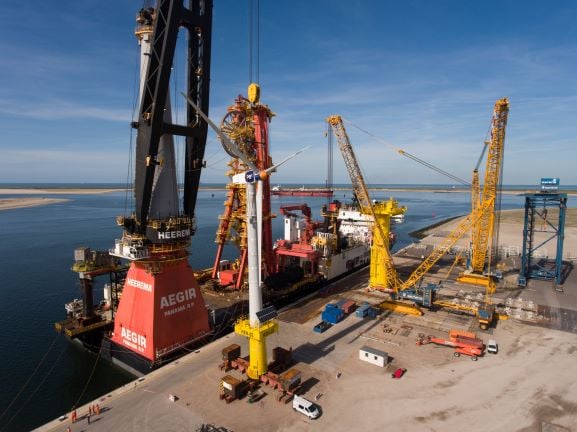An interview with a planner: Talking offshore wind and how projects come together
Career and development

Career and development
Meet Albert van der Wiel, Planner and Scheduler who has helped companies deliver their projects in several complex industries, from major FPSOs to offshore windfarms.
Planners are key to projects being delivered on time and within budget, so when you want to know what happens behind the scenes, there's nobody better to ask.
We had a really interesting conversation about how offshore windfarms are built, and how things are a little different in oil and gas.
Each company (operators and contractors) has a planner or scheduler covering different aspects of a project.
The operating company gets a permit to build a windfarm, then draws up a high level schedule which develops over time into the FID (Final Investment Decision) and a more detailed schedule.
The schedule reflects the key moments in the development of the project and is attached to the contract.
The bid-winning contractor then begins providing engineering/construction services — but they can't begin until their planner develops a detailed implementation schedule.
Engineering and installation schedules are developed in parallel and are quite extensive.
Parts are made in different locations all over the world, and they need to be moved to the marshalling yards by a certain time.
This involves a lot of work for procurement and logistics – enquiries to be made, quotes obtained, orders placed, and so on.
All the parts then need to be loaded onto a vessel and transported to the site for installing.
The installation is done in campaigns: Piling/Foundation – Jackets – Nacelles – Rotors, as well as the cabling and substations to connect the windfarm to the power grid back onshore.
The aim is to finish the last piece of one campaign at the end of the season so you can start the next campaign the following season.
Logistics is complicated and important. Installing a jacket/piling is quite simple, but getting all the components onsite in time, with all vessel movements taken into consideration, is very difficult and involves a lot of risk.
Environmental conditions are a major factor, posing risks to vessels, the equipment on them and most importantly the people working offshore. Waves, weather and sea currents all have to be monitored and evaluated constantly.
Time is also a big challenge — the North Sea has a working season from April to September due to the weather, so everything has to fit in this period.
Transporting/sailing is lost time; the quicker a company can transport equipment the better[No text in field]
Quote 2

In some respects it depends on what you do; some disciplines can move over to wind more easily. Planners have skills which apply to every project; the main difference is terminology and the way contracts are put together/executed.
Oil and Gas installations are comparatively simple: only 1 or 2 topsides and then move on to the next project. Wind is a more sequential way of working, with differences in installation phases. Each part is done in turn – all the jackets, all the turbines, and so on. It can be tens or even hundreds of individual turbines creating the logistical challenges.
This is why offshore wind projects are divided into stages — the equipment just isn’t there to install the massive projects in one go. The very large projects such as Moray East/West and Dogger Bank 1/2/3 are key examples of having to develop schemes in 2 or 3 phases.
Wind also has a lot more milestones to hit than Oil and Gas, and more penalties with them. The milestones are driven by the Operators and their contracts.
There is a big problem in the USA, particularly on the East coast where lots of projects are developing — there is no infrastructure. Everything is in the Gulf of Mexico where the Oil and Gas industry resides; lots of vessels and marshalling yards are there, but they're not available on the East coast.
Manufacturing is currently a big problem for developers. There are no facilities to manufacture monopiles and foundation piles in the USA, so they have to be made in Europe and shipped over, which is both a logistics and cost problem. It could be better value to develop manufacturing capacity in the USA in the coming years.
Another thing is that only a small number of states “own” the waters, so there is competition between them as to who builds the manufacturing facility and the yards which can store and transport piles and jackets. Companies wanting to develop projects have to speak to each individual state and negotiate separate elements with each – all of these are risk elements to be considered during the tender phase and during construction.
Yes, the infrastructure is there. Denmark is very well-equipped; the UK has great facilities. Smulders and SIF have a consortium in the Netherlands and Belgium — Smulders build the foundations and jackets, while SIF make the monopiles and foundation piles.
The old Oil and Gas companies in Europe are forming consortiums to deliver services more efficiently. They have over 50 years' experience delivering projects in the North Sea, and the principles are the same/very similar – a facility offshore (foundation and a topside), infrastructure to connect to shore, facilities onshore to receive the power.
As projects get bigger, operators will want to contract vessels for longer periods with possible extensions, in the same way Oil and Gas operators used to contract drilling vessels on a long-term basis.
There are already companies building new vessels to meet these new scenarios, with different characteristics to fit what they will be used for in the installation phase – foundation & jackets or turbines, towers, blades & nacelles. See a next-generation vessel here.
Check out our global vacancies today and start your new career.